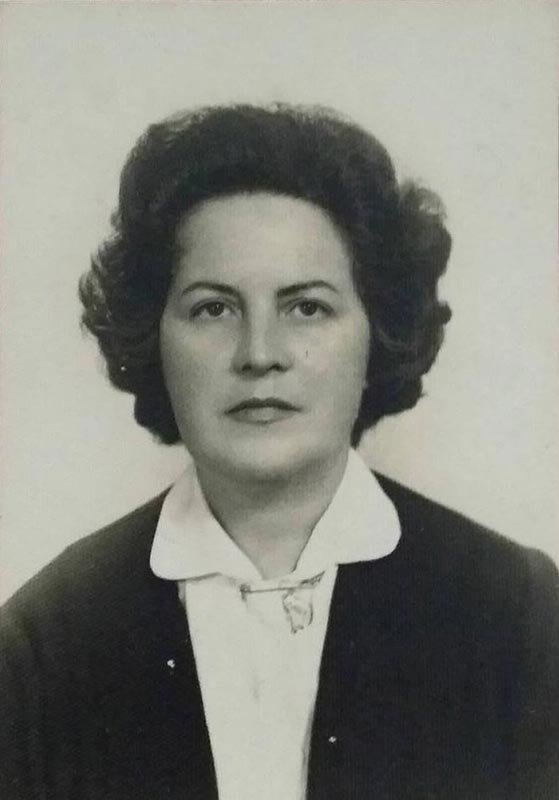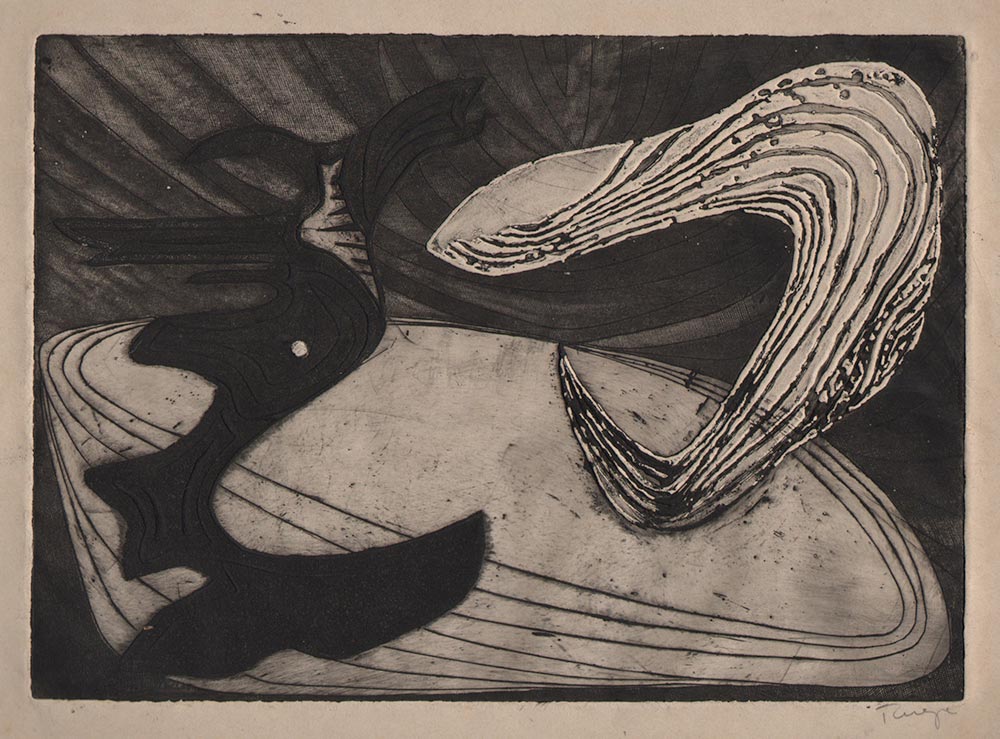20. Teresa D’Amico Fourpome
| Life Dates | 1914-1965 |
| Place of Birth | São Paulo, Brazil |
| Place of Death | São Paulo, Brazil |
| Birth Name | Teresa d’Amico |
Teresa D’Amico was born in São Paulo, Brazil, and studied at the Escola de Belas Artes de São Paulo with Nicola Rollo (1889-1970), an Italian-born sculptor who came to Brazil in his twenties.1 Her family was French by heritage, and sometime in the 1930s she sought further instruction in sculpture in Paris. She lived abroad in New York City from 1941 until 1948, during which time she studied sculpture at the Art Students League, first with William Zorach and later with Ossip Zadakine.2 While in New York, she also married Henry P. Françoise Fourpome and had two children, Rene and Jean Jacques. Around 1944, she became affiliated with Atelier 17. Although she did not exhibit with the Atelier 17 group in its show at the Museum of Modern Art in 1944, one of her prints, Braco e Negro, was sent on the subsequent tour of this exhibition to venues in Latin America.3 This heavily bitten etching and engraving was also included in the studio’s two subsequent shows at the Willard Gallery (1945) and Leicester Galleries (1947). An impression of *Braco e Negro*—the only known intaglio print by Fourpome—was once in the collection of Stanley William Hayter. After her return to Brazil, D’Amico’s art focused increasingly on painting and mixed-media and showcased elements of Bahia folklore.
Selected Bibliography
Shipp, Steve. “Teresa d’Amico Foupone [sic].” In Latin American and Caribbean Artists of the Modern Era: A Biographical Dictionary of over 12,700 Persons, 194. Jefferson, NC: McFarland & Co, 2003.
Notes
- The artist’s name is spelled in many ways, including Tereza, Theresa, Damico, Foupone. Basic biographical information about D’Amico Fourpome can be found through the Itaú Cultural, an encyclopedia of Brazilian culture. The artist’s granddaughter, Diana Fourpome, was also helpful in filling in biographical details. ↩
- See the artist’s student registration card, Art Students League of New York. Biographical information about d’Amico Fourpome often states she attended “the Rockefeller Foundation” while in the United States. While the Rockefeller Archive Center cannot substantiate any direct support, it is possible she interacted with members of the Rockefeller family. Mary Ann Quinn (Archivist, Rockefeller Archive Center), email to Christina Weyl, March 24, 2017. ↩
- After the exhibition’s run at the Museum of Modern Art in the fall of 1944, the museum organized two traveling exhibitions, one that circulated within the United States and the other that went to venues in Latin America. D’Amico Fourpome was invited to exhibit a work in the latter, along with three other Latin American women artists who had worked at Atelier 17: Lucía Quintero, Lily Garafulic, and Maria Martins. For more about the Latin American exhibition, see Department of Circulating Exhibition Records (II.1.86.2.1), The Museum of Modern Art Archives, New York. ↩

